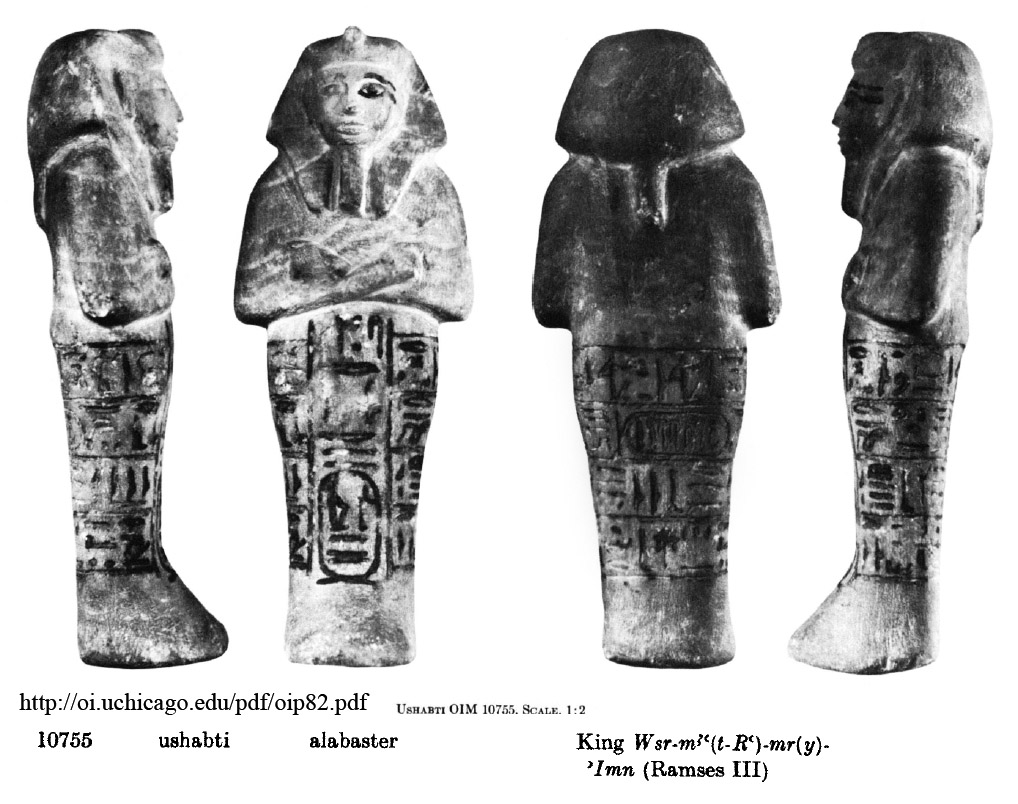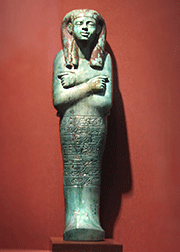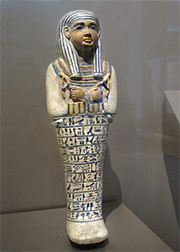
Alabaster Ushabti (Ramses III)
296x110x70 mm
OIM 10755
Photo ©Joan Ann Lansberry, 2010
 Alabaster Ushabti (Ramses III) 296x110x70 mm OIM 10755 Photo ©Joan Ann Lansberry, 2010 |
|
(From museum info card (which I failed to capture, but Hans Ollermann did): Royal Ushebtis "The tombs of kings and queens were equipped with ushebtis indicating that they, like their subjects, were expected, in theory, to undertake labor in the afterlife. The earliest royal ushebtis date to early Dynasty 18 (ca. 1550 B.C.). Some hold agricultural tools like non-royal ushebtis. Others, like the wood example shown here, hold royal scepters, and yet others are shown without any sort of tool or emblem. Examples made for royalty usually show the uraeus on the forehead, and some were kingly regalia such as the striped head cloth (nemes)."
Although I didn't photograph the info on this particular ushebti, I found it in an Oriental Institute publication: |
 Documents in the Oriental Institue Museum at the University of Chicago Oriental Institute Publications Volume LXXXII |
| OIM 10755 "Presumably from King Ramses III's tomb in Biban al-Muluk at Thebes. The incised characters of the inscription were filled with a paste now mostly dark green but probably once blue. If the the figure carried any utensils, these were merely painted on; no trace is now visible." |

Shabti of Seniu @ the Met Museum

Shabti of Lady Sati @ the Brooklyn Museum


